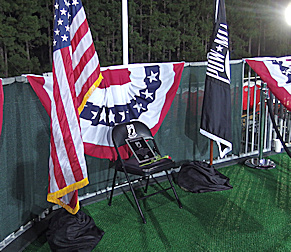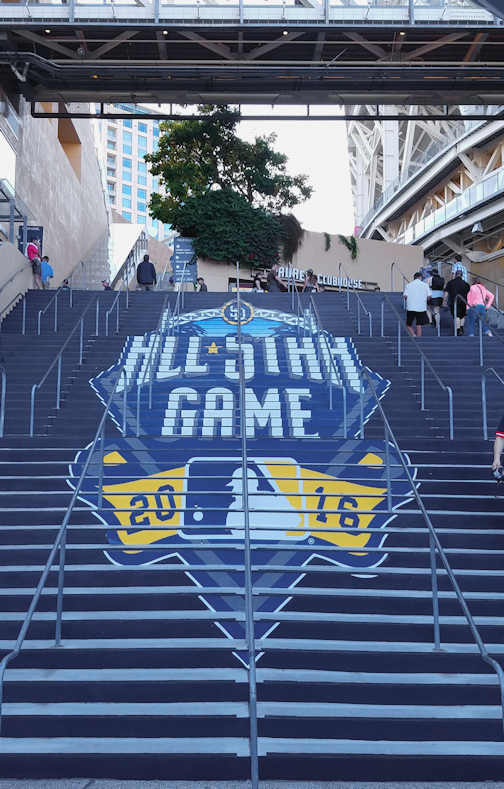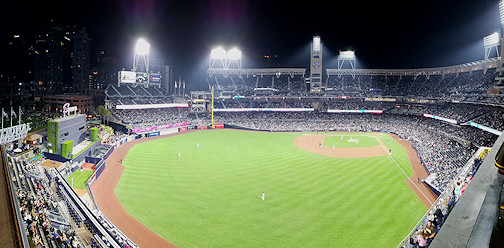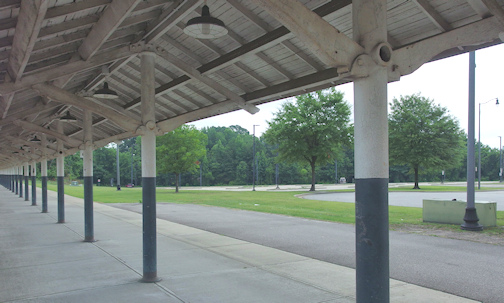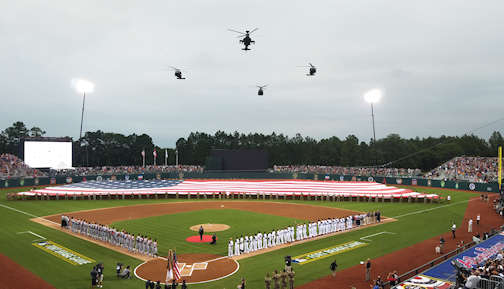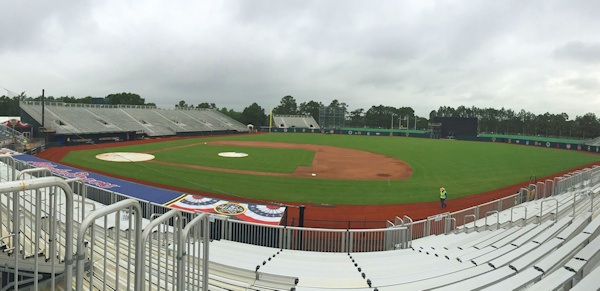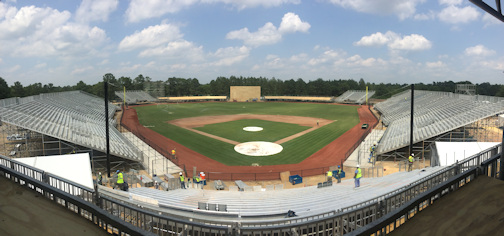This is part three of our series on the MLB game that will be played at Fort Bragg, NC on July 3rd
In terms of population, Fort Bragg in North Carolina is the largest military installation in the U.S. Not only is it home to the world-renown 82nd Airborne Division, its nearly 55,000 service members represent about 10% of the U.S. Army’s total. When you include their families, military retirees and Department of Defense civilians, you’re looking at a quarter of million people within its 500 square miles.
So when Major League Baseball wanted to honor America’s military, Fort Bragg was the logical place to do it. That’s why a regular-season game between the Braves and Marlins will take place there this Sunday evening, as part of the massive Fourth of July celebration on the base.
As described in the first two installments in our series on this special event, Major League Baseball and the MLB Players Association are footing the bill to build a temporary ballpark to hold this game … but that didn’t mean it was easy to gain the approval to do it.
Eric Hill is the Community Recreation Division Chief for the Directorate of Family and Morale, Welfare and Recreation at Fort Bragg. Yes, titles and departments have long names in the Army. The ballgame on July 3rd falls under Hill’s jurisdiction.
Hill became aware of MLB’s desire to hold this game last August. At that point, quite a bit of legwork had already happened. After MLB broached the subject to the Department of Defense, it then “worked its way through the different channels and commands,” according to Hill. That included the IMCOM Commanding General, the Atlantic Region Director, Fort Bragg commanding General, and the Garrison Commander “and eventually the email ended up in my in-box.”
After discussions between Major League Baseball headquarters and the senior commander at Fort Bragg, “everyone saw the good in the gift. We told them we’re excited about it and wanted to pursue it.” Because the Army viewed the gesture as a “gift,” a formal process ensued where MLB had to make the offer formally, and then have it reviewed by numerous entities within the Department of Defense, finally reaching the Acting Secretary of the Army. Then the proposed construction process had to be reviewed by Congress.
 |
| This is how the fairway of the abandoned golf course looked just before construction started in March. Photo courtesy of Populous. |
If this seems like an inordinately large number of steps, Hill points out that “all of this happened in a pretty tight timeline from how we normally handle things.” With the approvals and permits in hand, ground was broken March 9, which started a construction timeline that drew to a close this week. That allows the game to be played on July 3rd, “which is what (MLB) had proposed from the beginning, to tie together our nation’s birthday, America’s game and those who defend America.”
Read More
